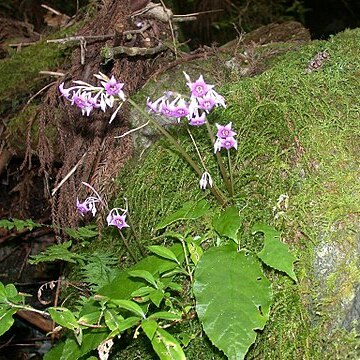A herb which grows in water. It has rhizomes but no stem. It keeps growing from year to year. There are only a few leaves at the base. The leaf stalk is 4-19 cm long. The leaf blade is narrowly oval or rounded. It is 18-24 cm long by 4.5-14.5 cm wide. The leaf base is wedge shaped or heart shaped. There can be some glandular hairs near the base. The leaf has irregular teeth. The leaf tapers to the tip. There are 8-11 side veins on each side of the midrib. The flowers are in a loose flower arrangement. There are 3-23 flowers. The flower stalk is 9-15 cm long. The fruit is a capsule 7-10 mm across.

